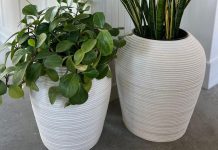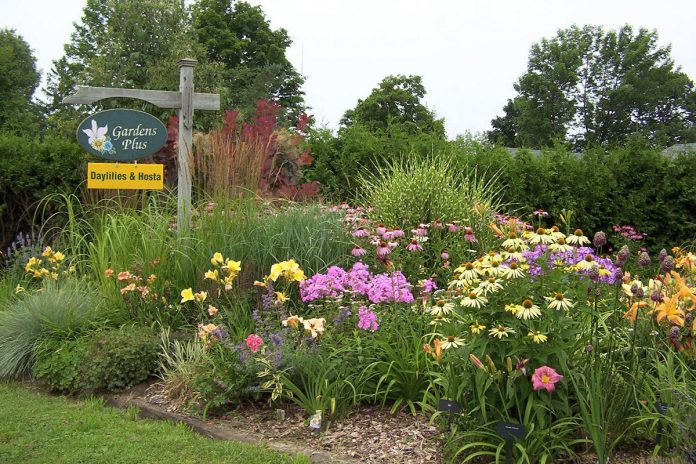
Everybody wants a garden that is bountiful, colourful, healthy, and the envy of the neighbourhood. But, unfortunately, not everybody has the time or knowledge to do so — or, they don’t think they do, anyway.
Fortunately, for 27 years, Dawn Golloher, owner of Gardens Plus located just east of Peterborough in Donwood, has been the go-to guru for even the most incompetent plant owners.
Though the retailer became popular by once shipping across the country, since the pandemic Gardens Plus has focused on serving the local community, sharing knowledge, expertise, and a whole lot of perennials with those who return season after season.
On Thursday, May 9th, the plant haven is opening with hundreds of species of hostas, daylilies, coneflowers, hellebores, ferns, and other perennials spread across display gardens and greenhouses. While advance orders for pickups sold out in less than 24 hours this year, lots of perennials will be available when Gardens Plus opens for the season, 90 per cent of which can be browsed on the Gardens Plus website.
Here are a few tips from Golloher herself for curating a healthy, happy easy-care garden this spring so you can, as their slogan goes, spend more time enjoying the garden and less time working in it.
Beware of the U.S. hardiness zones
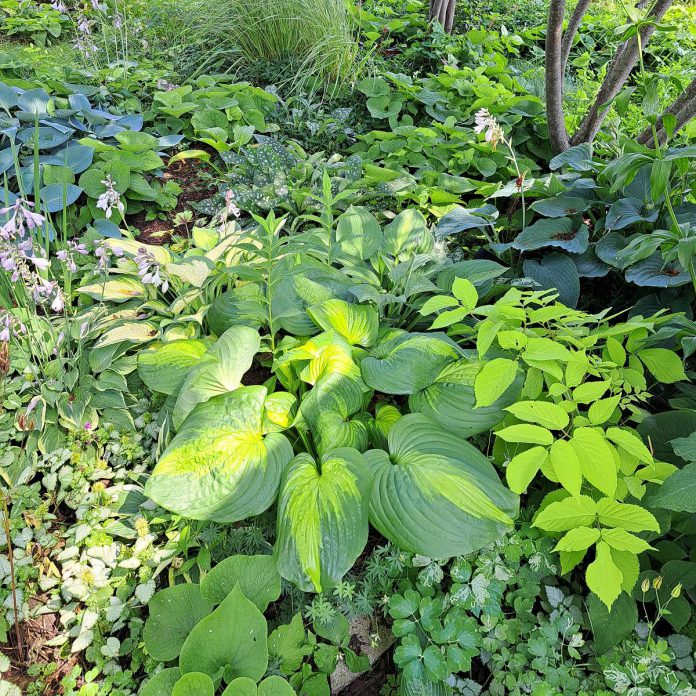
You may be aware of how important it is to plant perennials that align with your garden’s hardiness zone, but did you know that zones down south are labelled by a system different to Canada’s? That means it’s imperative to know where your plants are coming from.
The hardiness zones define the geographical regions whose climate conditions determine which plants will and will not thrive on the land.
While Peterborough region is 5b, the southern Kawarthas in Cobourg is closer to 6a, and those of us up north in Bancroft and Haliburton are on the lower end at 4b. Hardier plants might fit into many zones, though the zone it is labelled with marks the climate for which it is best suited.
The Canadian hardiness zones are calculated with more data than the U.S. zones, which are based solely on the minimum winter temperatures.
“A lot of people don’t know this, but for the U.S. zones you have to add one,” says Golloher. “If somebody’s shopping on their own and they’re buying from, for example, Proven Winners, a U.S. company, and their tags say a ‘hosta zoned three,’ it would be zone four in Canada.”
Golloher also guesses that since the maps haven’t been updated in a while, through climate change has been affecting global temperatures, the maps will likely be re-done in the next few years.
“The zones are changing a lot,” says Golloher. “We’re actually getting warmer here, so in a sense it’s benefiting us, but we have to still watch that amount of snow cover that could affect the zones. In the past few years, we had early snow, but, fortunately, we didn’t have any brutal temperatures this past winter.”
To see what hardiness zone your garden is in, visit planthardiness.gc.ca.
Learn the difference between shade and sun plants
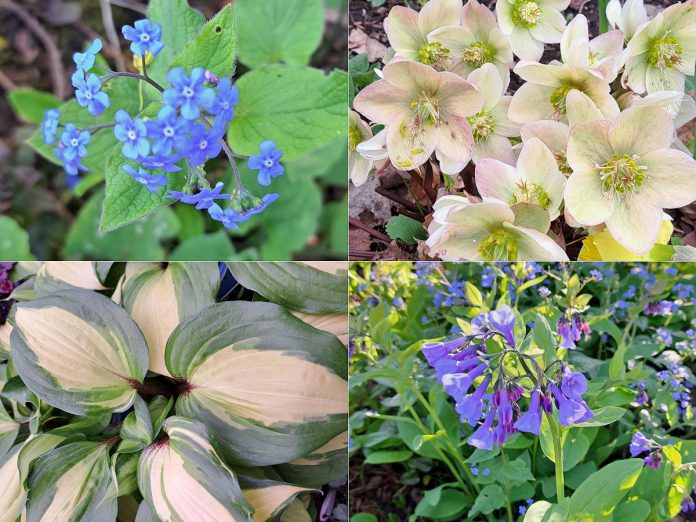
One of the most common mistakes Golloher sees when it comes to new gardeners who can’t get their perennials to bloom is that they did not plant them in the right place in their garden.
“Make sure that you put your full-sun plants in the full-sun situations and put your part-shade plants in the part-shade situations,” she says.
To be best prepared for that, Golloher suggests analyzing your garden areas prior to shopping at a nursery or retailer. Does the garden get full sun? Is it in the north or south? Are there trees around that provide day-time shade?
“You want to make sure when you’re shopping for your garden, you know when the sun hits and for how long,” she says. “Morning sun is actually part-shade because it’s in full-sun only in the morning.”
Part-shade plants would include the deer-resistant Jack Frost Brunnera, which initially looks more like a baby’s breath, but once it’s done flowering, the larger leaves resemble a silver-leafed hosta.
The 150 hosta species at Gardens Plus are part-shade plants as well, available in all kinds of textures, colours, sizes, price points, and shapes. For a foliage plant, the coral bells are great part-shade plants, while ligularia, which resemble water lilies, provide a stunning orange or yellow leaf flower for a later bloom to add some colour to the garden.
Rather not wait that long? The hellebore is one of the first blooming pollinators, blooming soon after the snow melts. One of the hardiest, the Ivory Prince is one which can be grown in even colder climates.
“There’s a huge rage on the hellebores because they’re flowering now,” Golloher says. “They’ll push up through the snow cover right now, and flower in March and April and then they hold their blooms. So even in May, they’re still flowering. Some of them have really cool foliage so they’re great for part-shade.”
Those with a full-sun garden might be interested in the new Nepeta Chartreuse on the Loose, named for its yellowed leaves which contrast its blue-purple flower.
“It’s gorgeous — I love when you can see something that’s attractive, not just when it’s flowering,” says Golloher. “The foliage is just as attractive.”
Other sun-loving perennials include the very hardy Siberian irises, cone flowers, daylilies — which are one of the perennials people shop for most at Gardens Plus — and sedums. While many gardeners might first be drawn to the Autumn Joy Sedums, Gardens Plus sells them in stunning reds, purples, and even blacks. As an outdoor succulent, they are easy to care for.
“You put them in, you water them, and you don’t really ever have to water them again,” Golloher says. “That’s how hardy they are and how easy it can be for someone that wants a really easy-care garden.”
Mix the soils properly when planting
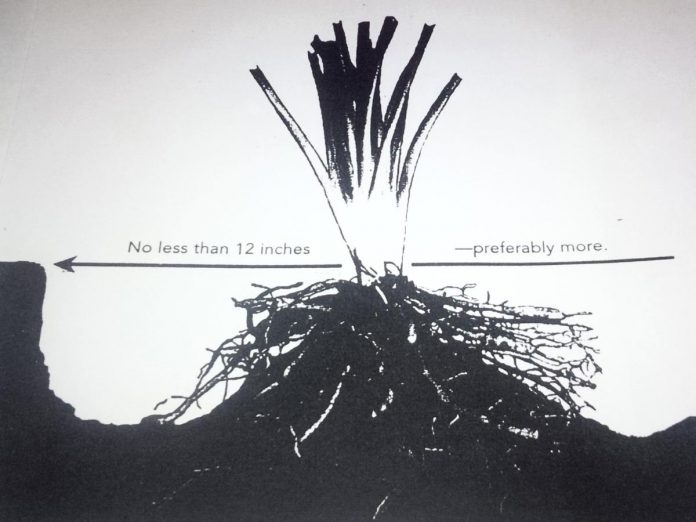
While it might seem obvious, another common mistake Golloher comes across is gardeners forgetting to properly mix the soil when planting their perennials.
“When you get your plant from a greenhouse and it’s in a one-gallon pot, a lot of people will just dig a hole and put that right in the hole,” she says. “But you want to mix it because you may not know what’s in that soil from the garden centres.”
To properly plant, Golloher tells her customers to dig a hill in the bottom of the hole and put the crown (the plant base, where the roots begin) on it and tamp down the soil that’s been mixed together.
“Dig the potting mix away from the roots and mix that with what you’re going to put in the hole,” she says. “Water the hole and then spread your roots out.”
Don’t plant during heat spells and water deeply but less frequently
Something Golloher noticed last year is that on a beautiful hot day, customers will swarm to Gardens Plus, eager and excited to get elbow deep in the soil. But, actually, heat spells are not the right time to be planting perennials.
“Never plant during a heat wave. You’re stressing yourself out as well as the plants. Wait for it to be a little cooler — in the morning or the evening is best — and then water them in well,” Golloher says. “Hold them off in a shady spot, as it’s not going to hurt them by being delayed.”
Though most of the plants sold at Gardens Plus are drought-resistant, this year might be faced with the same issue given the calls for another dry summer. Golloher has already been collecting rainwater, which is the only water source used to feed the greenhouse plants.
To combat the dry season, while it might be tempting to water frequently, Golloher says it’s better for the plants to be watered less frequently but for longer periods of time so as to ensure the water soaks well into the ground. Water merely on the top level of the soil can easily evaporate.
“If you water every three or four days, just a bit, the water only goes so far and then what happens is the root wants to come up to get the water,” she says. “Water deeply once a week or twice a week, depending on the plant, and then the water goes down and when the roots are looking for water, they go down to get it and that’s what makes for a healthy plant.”
For plants that like moisture, like ferns, hostas, and hellebores, top dress the planting with compost or manure, as it will hold some of that moisture.
Be patient
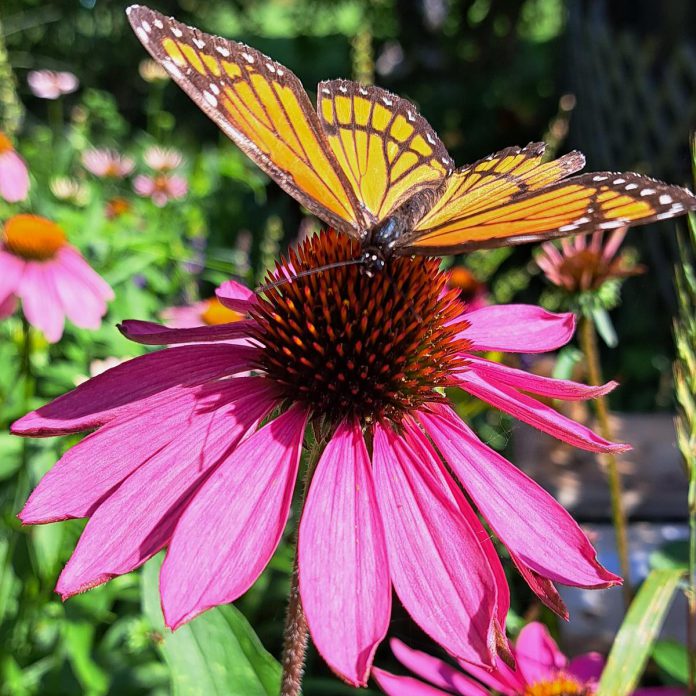
Some plants may not always look lively, but that doesn’t mean they aren’t alive.
Even despite the early spring, coneflowers want the soil to be warm or else they go into “transplant shock” upon being planted. The best time to plant is when the ground is warm to the touch.
“And until about that time, the ones that you have in your garden from last year don’t look like they’re alive,” Golloher says. “I leave the stems until I see the green leaves starting and I can recognize the plant. A lot of people think that coneflowers don’t survive the winter, and I honestly think they’re being pulled out by mistake because we’re not patient.”
The reminder to stay patient extends well beyond the coneflowers to any of the perennials, as none will grow overnight.
“There’s a saying, ‘first year they sleep, second year they creep, third year they leap’,” Golloher says. “Patience is key, and knowledge is key to having a good garden.”
Gardens Plus can help with the knowledge portion, though you might be on your own when it comes to patience.
Visit gardensplus.ca to browse up to 90 per cent of the plants at Gardens Plus and start crafting your wish list.
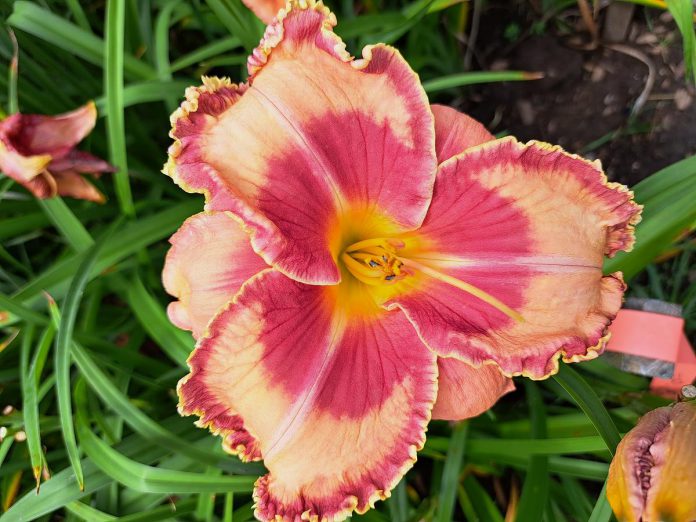
This story has been updated to clarify that, while advance orders for pickups are already sold out due to limited storage space for holding orders, lots of plants will be available when Gardens Plus opens for the season on May 9.
















